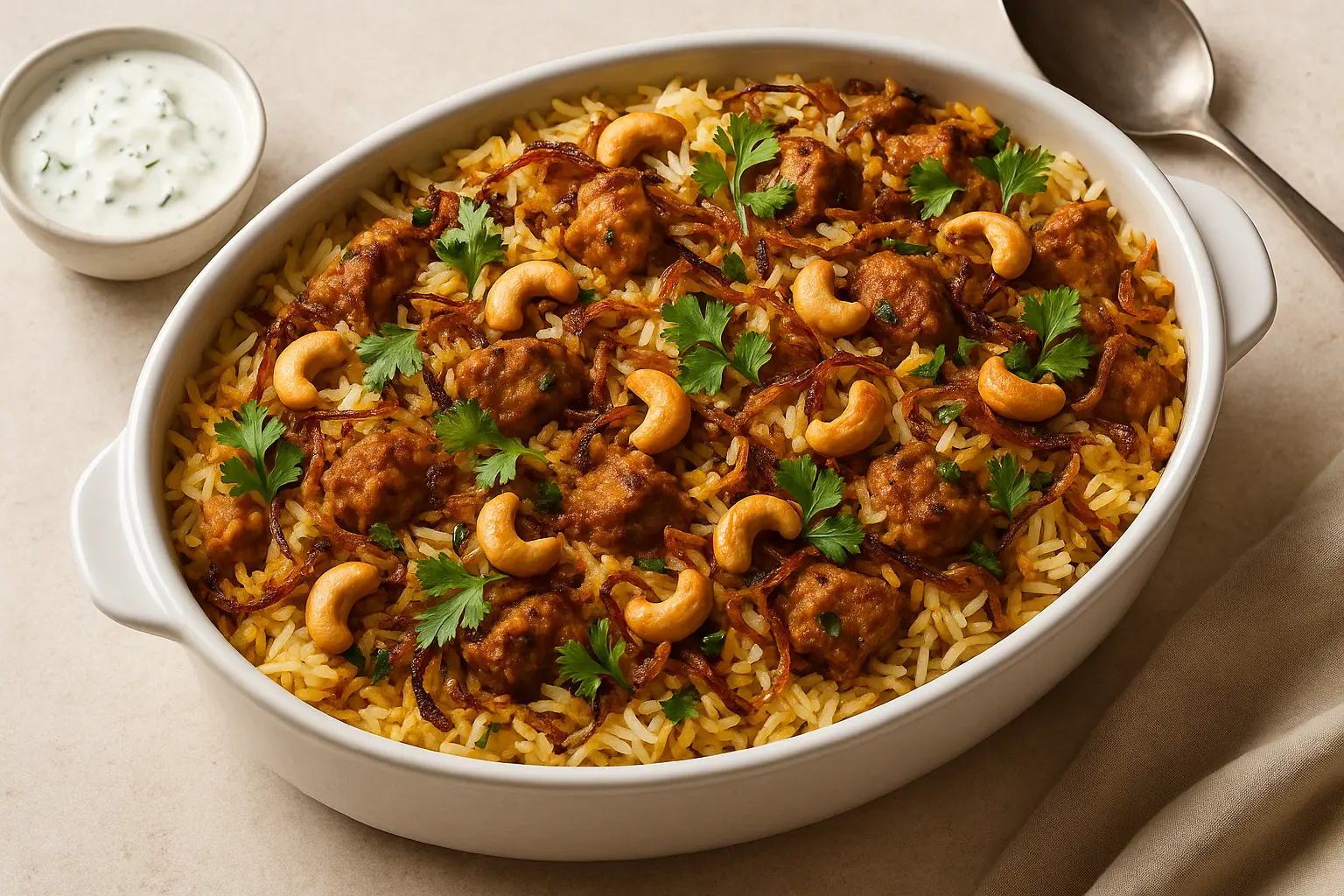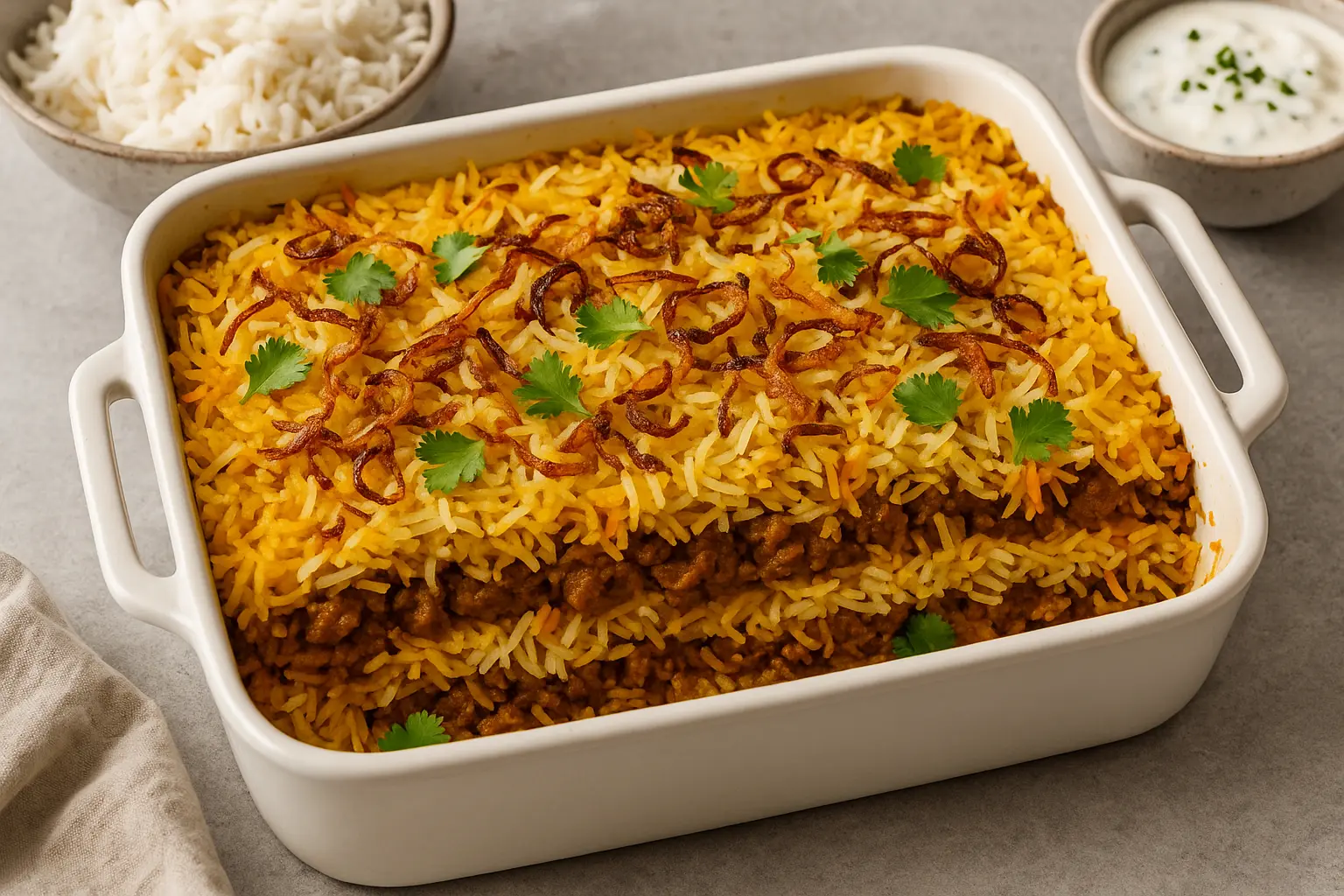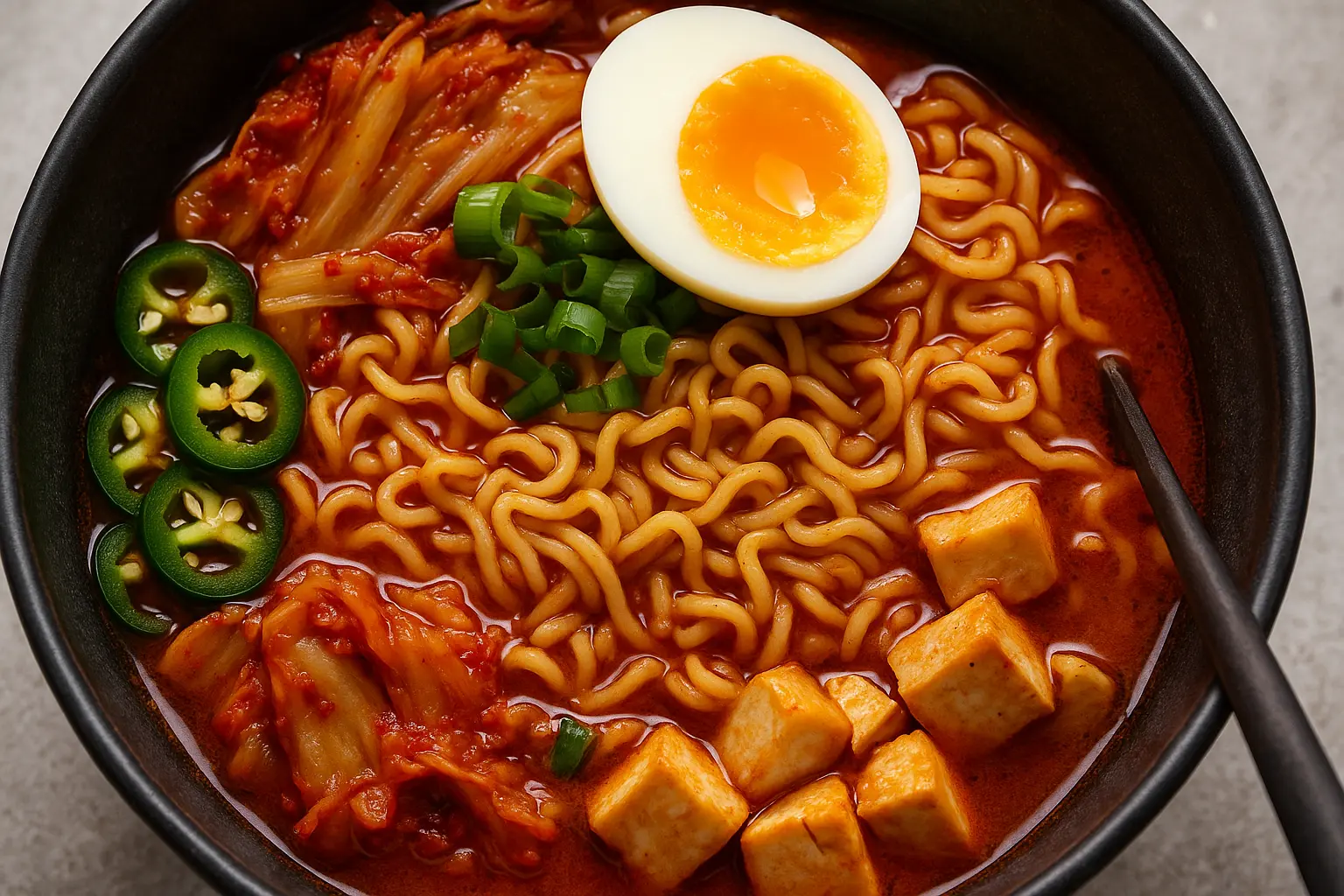Biryani is one of the most iconic dishes in Indian cuisine – a layered symphony of rice, spices, vegetables, and meat that has captivated food lovers for centuries. But while traditional biryani is a grand, time-intensive dish often reserved for festive occasions, modern lifestyles call for adaptations that capture its essence while being practical for everyday cooking.
That’s where Layered Biryani-Inspired Casseroles step in. By reimagining biryani as a baked casserole, we bridge tradition with convenience. The oven-baked approach not only makes it simpler to prepare but also yields a hearty, family-style dish that’s comforting, customizable, and perfect for meal prep.
In this article, we’ll explore everything you need to know about these casseroles – from their origins and flavor foundations to ingredient variations, step-by-step guides, cooking tips, and serving ideas. Whether you’re a biryani purist or someone new to Indian flavors, you’ll find inspiration to bring this layered delight to your table.

1. Understanding the Roots of Biryani
1.1 Origins of Biryani
Biryani traces its history back to Persian influences that merged with Indian culinary traditions, evolving differently across regions – Hyderabadi, Lucknowi, Kolkata, and Malabar biryanis, to name a few. Each style reflects local tastes, spices, and cooking methods, yet all share the hallmark of fragrant rice layered with spiced proteins or vegetables.
1.2 Why a Casserole Adaptation?
Traditional biryani is slow-cooked in a “dum” method, sealing flavors inside a heavy pot. While spectacular, it’s not always practical for a weeknight dinner. A casserole adapts the layering idea, keeps the flavor depth, and makes it possible to cook everything hands-off in the oven.
2. Building Blocks of a Biryani-Inspired Casserole
2.1 The Rice
The soul of biryani lies in long-grain basmati rice. Its fragrance and fluffiness make it perfect for layering. Parboiling the rice ensures it finishes cooking evenly in the oven without becoming mushy.
2.2 The Protein or Vegetables
- Chicken or Lamb: Marinated with yogurt, ginger, garlic, and spices.
- Seafood: Shrimp and fish work for a lighter version.
- Vegetarian Options: Paneer cubes, mushrooms, or mixed seasonal vegetables.
- Vegan Twist: Chickpeas, tofu, or tempeh add protein while keeping it plant-based.
2.3 The Masala Base
Caramelized onions, tomatoes, and a blend of biryani spices form the heart of flavor. Essential spices include cumin, coriander, turmeric, cinnamon, cloves, cardamom, and bay leaves. A pinch of saffron or a drizzle of rosewater can elevate it further.
2.4 The Layering Concept
A typical casserole involves:
- A layer of par-cooked rice.
- A layer of protein/vegetables with masala.
- Another layer of rice, finished with ghee, herbs, fried onions, and nuts.
2.5 The Bake
Instead of sealing with dough, the casserole is covered with foil or a lid and baked at moderate heat, allowing the flavors to meld without burning.
3. Recipes: Variations of Biryani-Inspired Casseroles
Here we’ll explore multiple versions of the dish, giving you flexibility to suit diets and preferences.
3.1 Classic Chicken Biryani Casserole
- Marinade: Chicken thighs in yogurt, garlic, ginger, chili, garam masala.
- Layers: Rice, chicken masala, rice.
- Bake: 180°C for 35–40 minutes.
- Finish: Garnish with coriander, mint, and fried onions.
3.2 Vegetarian Paneer & Veggie Biryani Casserole
- Cubes of paneer tossed with bell peppers, carrots, beans, and peas.
- Tomato-based masala with cumin and coriander.
- Finished with saffron milk drizzle for richness.
3.3 Gluten-Free Lentil & Rice Bake
- Basmati rice layered with spiced lentils (masoor dal or moong dal).
- No dairy – use coconut milk instead of yogurt.
- A plant-powered, gluten-free comfort dish.
3.4 Seafood Biryani Casserole
- Shrimp marinated with lemon, turmeric, and chili.
- Light masala with less onion for quick cooking.
- Baked with layers of rice, shrimp, and fresh dill.
3.5 Vegan Tofu & Chickpea Biryani Bake
- Cubes of tofu crisped in a pan, chickpeas added for texture.
- Coconut yogurt marinade, dairy-free yet creamy.
- Perfect for high-protein vegan diets.
4. Step-by-Step Guide: How to Make It
Step 1: Prep the Rice
- Wash basmati until water runs clear.
- Parboil with whole spices (bay leaf, cinnamon, cloves).
Step 2: Make the Masala
- Fry onions until golden.
- Add ginger-garlic paste, tomatoes, and spices.
- Stir in protein or veggies, coat well.
Step 3: Assemble Layers
- Grease casserole dish with ghee or oil.
- Spread a layer of rice, then masala, then more rice.
- Drizzle saffron milk or melted ghee.
Step 4: Bake
- Cover tightly with foil.
- Bake at 180°C for 30–40 minutes.
- Let rest before serving – this enhances flavors.
5. Tips for Perfect Results
- Rice Texture – Don’t overcook during parboil; aim for 70% done.
- Marination Time – At least 30 minutes ensures depth of flavor.
- Moisture Balance – Avoid watery masala; too much liquid makes rice soggy.
- Resting Period – After baking, leave covered for 10 minutes.
- Add Nuts & Raisins – Cashews and golden raisins mimic festive biryanis.
6. Meal Prep & Storage
- Make Ahead: Assemble up to a day in advance and refrigerate. Bake when ready.
- Freezer-Friendly: Store portions in airtight containers for up to 3 months.
- Reheat: Warm in oven with a splash of stock to retain moisture.
7. Serving Ideas
- Pair with raita (yogurt with cucumber and mint).
- Serve with papadums or naan bread for variety.
- Accompany with fresh salad for balance.
- For festive occasions, garnish with saffron threads, pomegranate seeds, or rose petals.
8. Health Benefits & Dietary Adaptations
- Gluten-Free: Naturally fits, as rice is the base.
- High Protein: Add lentils, paneer, tofu, or meats.
- Dairy-Free/Vegan: Substitute coconut milk or dairy-free yogurt.
- Balanced Meal: Carbs, protein, and fats in one dish.
9. Global Fusion Twists
- Mexican Fusion: Add black beans, corn, and chipotle.
- Mediterranean: Use olives, feta, and oregano with rice.
- Thai-Inspired: Coconut milk, lemongrass, and Thai basil in the masala.
10. Conclusion
Layered biryani-inspired casseroles are more than just a shortcut – they are a creative evolution of a beloved classic. They honor biryani’s heritage while adapting it to modern kitchens, making it accessible to families, students, and anyone craving comfort food with bold flavor.
Whether you choose chicken, paneer, tofu, or seafood, the essence remains the same – aromatic rice, flavorful masala, and the magic of layers baked to perfection. It’s the best of both worlds: the soul of biryani with the ease of a casserole.
So next time you crave something hearty and aromatic, skip the takeout and try this baked wonder. One bite, and you’ll realize it’s not just dinner – it’s a celebration in every layer.
Leave a comment
Your email address will not be published. Required fields are marked *




















